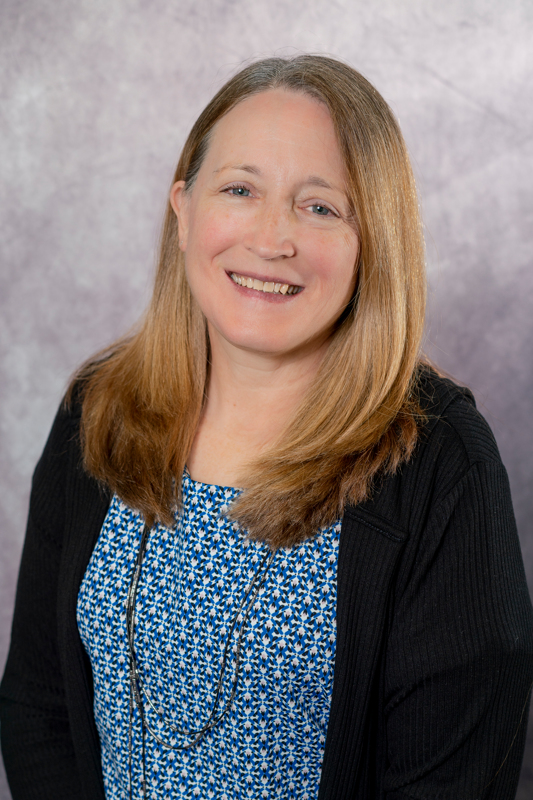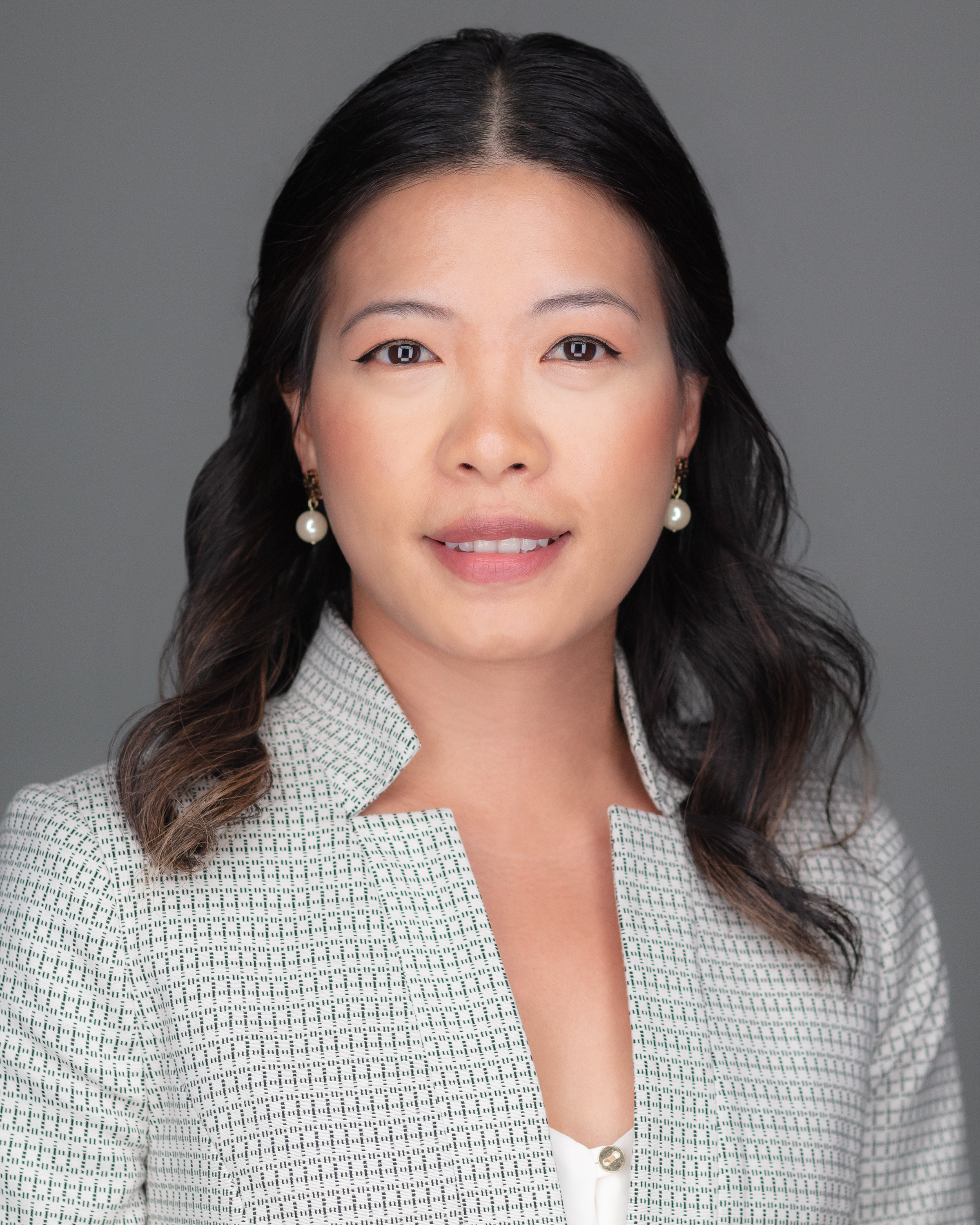What Advanced Practitioners Need to Know About Follicular Lymphoma: Diagnosis and Treatment
Module 1: Introduction to Follicular Lymphoma–Diagnosis and Front-Line Treatment
Susan Woodward, MSN, APRN, AOCNP®, Zanrha Esteban, MPA, PA-C, and Amy Sidorski, MS, ANP-C, introduce viewers to follicular lymphoma before discussing how it can present, appropriate tests and biopsies for diagnosing, and other essential information, including preferred first-line treatment regimens.
Chair

Susan Woodward
MSN, APRN, AOCNP®
Moffitt Cancer Center
Faculty

Zanrha Esteban
MPA, PA-C
Moffitt Cancer Center

Amy Sidorski
MS, ANP-C
Rocky Mountain Cancer Centers
Transcript
Susan Woodward: Welcome to JADPRO's roundtable discussion on follicular lymphoma. My name is Susan Woodward. I'm a nurse practitioner at Moffitt Cancer Center in Tampa, Florida. Joining me today are two of my colleagues, Zanrha and Amy.
Zanrha Esteban: Hi, my name is Zanrha Esteban. I'm a physician assistant in the malignant hematology lymphoma department at Moffitt Cancer Center.
Amy Sidorski: And hi, I'm Amy Sidorski. I'm a nurse practitioner at Rocky Mountain Cancer Center out in Colorado.
Susan Woodward: Zanrha and Amy, thank you for joining me today. I thought we could start this roundtable series off by discussing the diagnosis and frontline treatment of follicular lymphoma. So just some basic information: follicular lymphoma is the second most common lymphoma in the United States, but it's the most common low-grade lymphoma. It accounts for about 20% of non-Hodgkin lymphoma cases. The incidence increases with age, with the median age at diagnosis [being] 65, slightly more predominant in women, less common among people of Asian or African descent. There's a lack of consensus regarding risk factors for the development of follicular lymphoma. They theorize disease, infectious agents, drugs, and toxins. It's not an inherited disease, although 5 to 10% of siblings and children of follicular lymphoma patients may also develop a lymphoma. Follicular lymphoma is thought to arise from germinal center B cells, which include both centrocytes and centroblasts, and the pathogenesis is incompletely understood. Approximately 85% of follicular lymphoma patients have translocation t(14;18), which results in over expression of BCL2, which is an oncogene that blocks apoptosis leading to prolonged cell survival. But multiple genetic events are required for follicular lymphoma development.
So presenting symptoms generally are painless peripheral lymphadenopathy in the cervical, axillary, inguinal, or femoral regions that can wax and wane, but they don't completely disappear. About 20% of patients present with B symptoms. It can be diagnosed incidentally. You can have a CAT scan for another problem and enlarged lymph nodes are discovered, and that prompts a workup. Involvement of organs other than lymph nodes and bone marrow is rare. And CNS involvement is also rare. There are no lab abnormalities specific to follicular lymphoma, but LDH elevation and cytopenias are present in about less than 25% of patients.
So diagnosis. An excisional or an incisional biopsy versus core needle biopsy, you need multiple core needle biopsies. FNAs (fine needle aspirations) are generally not suitable as histologic grading cannot be performed. So essential lab and pathology tests, getting a hematopathology review and adequate immunophenotyping to establish the diagnosis. An IHC (immunohistochemistry) panel to look for the cell surface markers, I've listed those there. Additional testing that can be done is a molecular analysis to detect IG gene rearrangements, BCL2 rearrangements, a karyotype or FISH (fluorescence in situ hybridization), an IHC panel, Ki67, and then next generation sequencing panel sometimes is required.
So we do grade follicular lymphoma and the histology, which is growth pattern in cell morphology, can help to identify follicular lymphoma. The growth pattern is usually nodular and the morphology is composed of follicular center cells, usually a mixture of centrocytes, which are small-to-medium cells and centroblasts, which are large cells. The proportion of centroblasts varies and determines the tumor grade. Clinical aggressiveness increases with increasing number of centroblasts. So, a grade 1, I've listed the parameters there. You have grade 2 and then grade 3, but grade 3 is divided into grade 3A and grade 3B. Grade 1, 2, and 3A are generally considered indolent lymphomas. But grade 3B has a clinical presentation behavior and outcomes with treatment that more closely approximate that of diffuse large B-cell lymphoma.
So workup. Physical exam, assessing performance status, whether the person has B symptoms, CBC (complete blood count) with diff, LDH (lactate dehydrogenase), CMP (comprehensive metabolic panel), hep B and C testing, β₂ microglobulin, uric acid, quantitative immunoglobulins, a PET scan is preferred, especially if radiation therapy is planned for stage I or non-bulky stage II disease. You can do a CT TAP (computed tomography of thorax, abdomen, and pelvis) plus or minus a CT neck. Bone marrow biopsy may be required to document whether it's stage I or II disease if you're planning radiation therapy or if there are unexplained cytopenias. And also, would want to consider pregnancy testing, echocardiogram if you're considering an anthracycline regimen for treatment, as well as discussion of fertility preservation.
So staging, I've listed the Ann Arbor staging. There are other staging criteria, but I've put this one here. So, stage I is of course involvement of a single lymph node or a single extra lymphatic organ or site. Stage II is involvement of two or more lymph node regions on the same side of the diaphragm. Stage III would be involvement of lymph node regions on both sides of the diaphragm. And stage IV diffuse or disseminated involvement of one or more extra lymphatic organs with or without associated lymph node involvement. They subclassify, so if you see the A afterwards, that means absence of B symptoms, and a B would be presence of B symptoms.
So, we use the FLIPI (Follicular Lymphoma International Prognostic Index) scoring system to kind of help with our prognosis. So, one point is assigned to each of these five categories, age greater than 60 years, stage III or IV, hemoglobin level less than 12, number of involved nodal areas greater than four, and serum LDH level that's greater than the upper limits of normal. So high-risk FLIPI would be three or more adverse factors. I've listed the median progression-free survival, and two year overall survival. Intermediate risk would be two adverse factors and low-risk FLIPI would be zero to one adverse factors. And you can see even the higher risk still has a reasonable progression-free survival and overall survival time period. So these are patients that we're going to be seeing for a long time.
So, the prognosis again is variable. Stage I disease is potentially curative with radiation therapy in a percentage of patients, but stage II to IV is considered incurable. And in the relapse and refractory setting, follicular lymphoma remains incurable. It's characterized by cycles of treatment, remission, and relapse. Approximately, or I'm sorry, progression-free survival outcomes decrease with each subsequent line of therapy. And approximately 15% of patients with follicular lymphoma will undergo histologic transformation during their disease course generally to diffuse large B-cell lymphoma. And this is associated with rapid progression of lymphadenopathy, infiltration of extra nodal sites, development of systemic symptoms, elevated serum LDH, and often a poor prognosis. I wanted to mention discordance because you may see this mentioned in reports. And that's when you have a presence of a small B-cell proliferation in the bone marrow in a patient with large B-cell involvement in the lymph node. And that denotes transformation to aggressive phase of the disease.
And when we're thinking about starting treatment on patients, we have our diagnosis, we know the person has follicular lymphoma, we know their grade, we know the extent of their disease. We do have a nice grading and criteria system to help us determine when it's appropriate to start treatment. We use the GELF (Groupe d'Etude des Lymphomes Folliculaires) criteria and you can see the variables are listed there. And that would be involvement of ³ three nodal sites, each with a diameter of ³ three centimeters, any nodal or extra nodal tumor mass with a diameter of ³ seven centimeters, the presence of B symptoms, splenomegaly, pleural effusions or peritoneal ascites, leukemic phase follicular lymphoma, which is where you see >5.0 x 109/L malignant cells on your differential. And then cytopenias with leukocytes <1.0 x 109/L or platelets <100,000 or worsening anemia with Hgb<10g/dL.
Also, factors to consider that aren't specifically listed in the GELF criteria are, is there impending organ compression or compromise or is the LDH or β₂ microglobulin greater than upper limits of normal? And then another big factor, which we're going to discuss throughout the presentations, is the patient preference for starting therapy. That can be quite a discussion when you're presented with that patient and talking to them about treatment. So I wanted to ask both Zanrha and Amy, what kind of discussions, you have this newly diagnosed patient, what kind of discussions do you have with them when you have this diagnosed follicular lymphoma and you're looking at whether or not it's time to start treatment? Maybe Amy, want to chime in?
Amy Sidorski: Sure. Yes, I think a lot of times we do watch these patients for a period of time and oftentimes for many years before we start treatment, if they present to us and are diagnosed maybe because they had a lymph node on their mammogram that was biopsied and showed follicular and they're asymptomatic. So a lot of times as we're seeing them through the disease process, we're talking to them at their visits about potential upcoming treatments, anything new that's been approved for treatment of follicular lymphoma. And then also kind of finding out what their preferences would be when it comes time for chemo so that we can kind of involve them in a shared decision-making process.
Susan Woodward: Yes. Sometimes those relationships are so many years long that you just really get to know the patient so well and their preferences and almost like I don't think they're going to really want to do that particular treatment, but it really helps us narrow down good options for patients because we get to know them so well. Zanrha, did you have anything you wanted to add?
Zanrha Esteban: Yes, I just want to piggyback off what you guys were talking about. A lot of it I ask my patient, “Hey, where do you see yourself in five years?” Some of them are very young. They're like, “Well, I want to continue working and managing my business, so I want a therapy that can help me do that.” Or they want something very mild because they know that this disease is very indolent. It's a disease that they'll always have, but they won't necessarily die from it. So they kind of gear toward their preference of treatment in regards to what they value most in their life.
Susan Woodward: Yes, that's a great point, Zanrha. Okay, so I've listed first-line treatment regimens. We do have preferred regimens in the frontline setting. There's also regimens that are more preferred for, and I hate to always use the word elderly, I'm not even sure anymore what we consider to be elderly, so I do like to add that frail in with elderly because I think that's more and more what we're looking at. A 60-year-old can be very frail and an 80-year-old could be very fit and able to do treatments that maybe you wouldn't have considered maybe in the past. So preferred regimens in the first-line setting generally involve chemotherapy, plus or minus anti-CD20 monoclonal antibody obinutuzumab or rituximab. Also, lenalidomide and Rituxan can be used in first-line setting, as well as lenalidomide and obinutuzumab. You also can consider just starting treatment with Rituxan weekly x4 doses, especially to consider for low tumor burden. Or again, as you can see in the elderly and frail section, it's an excellent well-tolerated treatment for frail individuals.
You also can consider using chlorambucil or Cytoxan with Rituxan in patients in that setting. Want to note that Rituxan may be appropriate in patients initially observed and with progression of low tumor burden disease that don't meet GELF criteria, but you feel like they need to be treated or they're wanting to have some treatment. Sometimes it's something as simple as they have a lymph node that's in an area that's bothersome to them and they want that gone. I had someone that had a lymph node right where her seatbelt crossed her chest, and that was just very bothersome to her. So she really wanted to have treatment even though her burden of disease was very low and she technically didn't meet criteria. And also, another important point is that immediate initial therapy with rituximab in patients not meeting GELF criteria has not improved overall survival. So there really isn't a benefit to just jumping in and treating somebody unless there's a good reason that you have discussed with the patient.
Okay, again, first-line treatment regimens. You can consider consolidated therapy or extended dosing following chemo immunotherapy. And that consists of either Rituxan maintenance, 1 dose every 8 to 12 weeks for 2 years for patients initially presenting with a high tumor burden. You can also use obinutuzumab maintenance, which is 1000 milligrams every 8 weeks for 12 doses. And if initially treated with single agent rituximab, consolidation with Rituxan, 1 dose every 8 weeks for 4 doses. And this Rituxan maintenance recommendation was based on the PRIMA study for patients with high tumor burden following treatment with R-CVP (rituximab, cyclophosphamide, vincristine, prednisolone) and R-CHOP (rituximab, cyclophosphamide, doxorubicin, vincristine, and prednisone). There's no data supporting using rituximab maintenance following other regimens, including BR, which has bendamustine Rituxan.
This brings us to the end of this discussion. I'd like to thank my colleagues Zanrha Esteban and Amy Sidorski for taking time out of their busy days to talk with me. For more information and to view our discussions on follicular lymphoma, please visit JADPRO online at jadpro.com. Thank you so much and have a great day.

